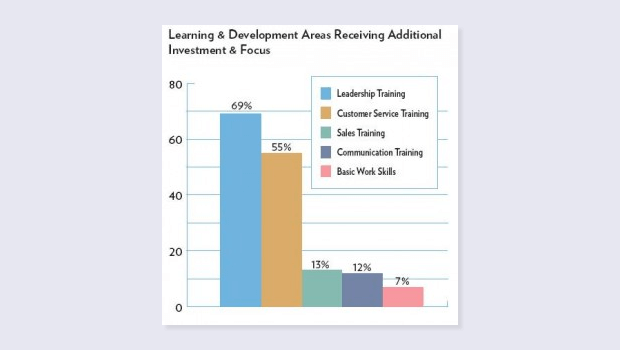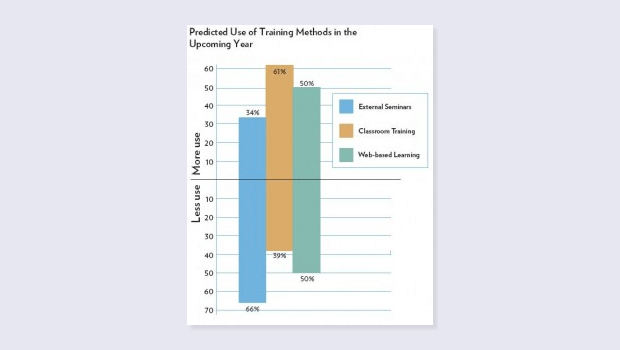It seems more and more like this recession will further enhance the position of eLearning amongst various training options an organization could choose from for their learning and development initiatives. In March earlier this year I wrote – ‘while the times are tough, they are on our side’ (by ‘our’ I meant all technology enabled learning solution providers). Then In May I’d posted about the growth of eLearning outsourcing as projected by an India-based research agency – Valuenotes and more recently about how training companies are adopting eLearning using us as their training back-office. All of these lead upto what I have always believed in – that this downturn will lead to renewed growth in eLearning industry. Here’s more to support that thought.
In an even broader perspective, I think the workplace learning space is changing in a more fundamental way and this recession accelerating that change. Here’s a insight into what the industry sees as the ‘Future of Workplace Learning’ at the Learning Circuits blog.
Recently I came across this June 2009 dated survey analysis report from AchieveGlobal, called Learning in Difficult Times. As the name suggests, it tries to put a pulse to what’s happening in the corporate training and development domain. This survey was conducted in early 2009 and concludes – amongst other trends – that eLearning is on the rise. Here are my three key take-aways from this survey:
| 1. | Employee training and development is a long-term strategy The most compelling insight from the survey is that the notion of employee training and development being a long-term strategy and not a short-term fix is finally catching on. The report states: …51% of respondents report that their company’s level of investment and focus on employee learning and development has either increased or stayed the same in the face of current economic conditions. That despite 85% of those same respondents reporting that their organization has experienced a moderate to severe impact as a result of the recession.
This is good news for learning professionals – training managers, HR heads, CLOs, training providers, eLearning vendors, etc. If this result is truly indicative of the real situation in most industries, training & development will soon get its rightful place in strategic decision forums (does that mean boardrooms?) across the corporate world. |
| 2. | Leadership, Customer Service – getting most of the additional funds Leadership and Customer Service training are getting large amounts of additional funds. The graph below depicts the same.
|
| 3. | eLearning is on the rise In response to a question on the – predicted use of different training methods next year – external seminars seem to be losing out. That should be a cause of concern for Training Companies and Independent Trainers who provide external ILT training sessions. Classroom training (and by that I assume in-house training as opposed to external seminars) is finding favor as it would hopefully save some dollars on travel and other related expenses.
How did I conclude this? It’s interesting to note that in contrast to the 39% reporting a decrease in classroom training, 61% of respondents report their use of this type of training will either increase (17%) or stay the same (44%).
So it seems that the 61% includes responses given to both options “same use” and “more use”. Only 17% are saying it will increase. Further on Web-based learning the report says: Training delivery systems that are expected to experience a 50% or better increase in usage at our respondents’ companies in the coming year include Web-based e-learning, Web-based training such as LiveMeeting and Webex, conference calls and mentoring/coaching.
…and… After weathering years of predictable hits and misses while working to establish Web-based learning as a viable training method, the scales are unquestionably tipping in favor of making this training delivery method a mainstay in progressive organizations nationwide.
With 85% of our survey respondents anticipating that their company’s use of Web-based training will either stay the same or increase in the coming year and 87% predicting the same for Web-based e-learning, it’s safe to say that a trend is emerging. |
So it is evident that for Web-based training, the graph should have read 85%/15% instead of 50%/50% that it shows currently.
Ok…so the conclusion that the graph is faulty is correct.
The key takeaway from the report however remains – eLearning seems set to grow next year.
Conclusion
These results reaffirm our confidence in eLearning as a business. I think the next 3-5 years would be a high-growth phase for eLearning industry. In my opinion, a large part of it would come from ‘traditional’ eLearning and not from the new age stuff that we keep reading about. This presents an opportunity for Training Companies to get online before the growth phase kicks-in. When the economy rebounds – some think it has already started taking a U-turn – training budgets would bounce back and eLearning would be in demand. You need to be ready.





















